ARCHIVED: Chapter 18
| << Previous | Contents | Next >> |
Chapter 18. Structural Design Of Recycled Pavements
Introduction
Structural design of pavements takes into consideration those aspects of design which provide required strength or stiffness to the pavement structure. The method has evolved from the application of engineering judgement to predominantly mechanistic or semi-mechanistic procedures. Pavement materials can now be characterized by resilient modulus and fatigue characteristics, and pavement materials with different strength and structure can be denoted by appropriate "structural numbers." Recycled asphalt materials can provide pavements similar or even better than pavements constructed with conventional hot mix asphalt. However, the wide range of properties of recycled mixes, resulting from variation in material and construction methods must be considered during structural design of recycled pavements.(1) On an average, the coefficients for both recycled surface and recycled base courses are found to be greater than the coefficients for respective conventional mixes determined in the AASHTO Road Test. The AASHTO guide indicates that in essence there is no difference between hot recycled and virgin HMA material, and recommends the structural rehabilitation analysis method (for conventional mix) for design of recycled pavements as well.(1) However, it also cautions that since long-term performance data is not available for recycled mixes, engineering judgement should always be applied for design of such mixes. In this chapter design guidelines recommended by AASHTO and the Asphalt Institute are discussed.
Structural Design Of Recycled Hot Mix Asphalt Pavement
AASHTO Method
The AASHTO guide(1) presents a method of overlay design based primarily on structural number, thickness of underlying layers, and drainage coefficients. Design of recycled pavements can be based on the same methodology.(1) Basically, a nomograph is used to calculate a combined total structural number for the whole pavement section, based on performance period, traffic, and change in Present Serviceability Index (PSI). The structural number can be represented by a combination of product of depth, structural number, and drainage coefficients for each of the pavement layers. The structural number of the recycled layer required is calculated by subtracting the effective structural number of the existing pavement from the structural number required by the "new pavement," which includes the recycled layer. The effective structural number of the existing pavement is modified by a remaining life factor for the existing pavement. The equation is as follows:
SNOL = SNY - (FRL X SNxeff)
where:
| SNOL | = | structural number of the required overlay |
| SNY | = | structural number required for a "new" pavement to carry the estimated future traffic for the prevailing roadbed soil support conditions |
| FRL | = | remaining life factor |
| SNxeff | = | effective structural number of the existing pavement at the time the overlay is placed |
Structural number (SN) is defined as follows:
SN = a1D1 + a2D2m2 + a3D3m3
where:
| a1, a2, a3 | = | layer coefficients representative of surface, base, and subbase courses, respectively |
| D1, D2, D3 | = | actual thickness (in mm, inch) of surface, base and subbase courses, respectively |
| m2, m3 | = | drainage coefficients for untreated base and subbase layers, respectively |
One important feature of the design method is the inclusion of reliability factor in traffic and performance prediction. The reliability design factor considers chance variations in both traffic predictions (the actual number of load applications during the analysis period in terms of equivalent 18-kip single-axle loads, ESAL) and performance prediction (the number of ESALs that will result in the pavement reaching a specified terminal serviceability level). A reliability level, R, and an overall standard deviation, So, are the required input parameters for calculating reliability. A higher value of R means a greater assurance of pavement serviceability for the design period, and hence a greater thickness and a higher cost. Values of So are based on pavement types and are available for flexible and rigid pavements.(1) The details of the design method are presented in the AASHTO guide.(1) A simplified flow chart is shown in figure 18-1.
Figure 18-1. Flow chart for AASHTO design method.
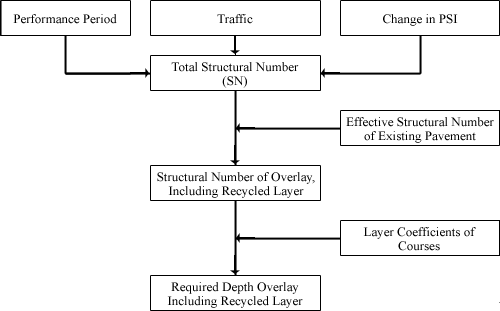
Asphalt Institute Method
For hot-mix recycling, the Asphalt Institute(2) recommends the same design procedure as for conventional mixes. It has been recommended to use the method outlined in the Asphalt Institute's publication "Thickness Design - Asphalt Pavements For Highways and Streets."(3,4) The parameters required for designing the pavement thickness include the following:
- Equivalent 18-kip single-axle load (ESAL) applications. A simple traffic estimation procedure(4) is presented in table 18-1. This can be utilized on the basis of roadway type. A detailed analysis can also be performed based on type of vehicle, truck factor for each vehicle, and single or multiple growth factors. The design ESAL is calculated by the summation of the products of number of vehicles and the corresponding truck and growth factors.
Table 18-1. Traffic analysis.(4) Whenever possible the traffic analysis and design procedures given in The Asphalt Institute manual, Thickness Design - Asphalt Pavements for Highways and Streets (MS-1) should be used. However, in many cases it is necessary to estimate traffic using only limited information. In such cases, the following table may be used.
Definitions
The following definitions apply to the traffic analysis procedure:
ESAL is defined as equivalent 80 kN (18,000 lb) single-axle load applications. It is the effect on pavement performance of any combination of axle loads of varying magnitude equated to the number of 80 kN (18,000 lb) single-axle loads required to produce an equivalent effect.
Heavy trucks are described as two-axle, six-tire trucks or larger. Pickup, panel and light four-tire trucks are not included. Trucks with heavy-duty, wide-base tires are included.
Traffic Classifications
Traffic Class ESAL Type of Street or Highway Approximate Range Number of Heavy Trucks Expected During Design Period I 5 x 103 Parking lots, driveways
Light traffic residential streets
Light traffic farm roads5,000-7,000 II 104 Residential streets
Rural farm and residential roads7,000-15,000 III 105 Urban minor collector streets
Rural minor collector roads70,000-150,000 IV 105 Urban minor arterial and light industrial streets
Rural major collector and minor arterial highways700,000-1,500,000 V 3 x 106 Urban freeways, expressways and other principal arterial highways
Rural Interstate and other principal arterial highways2,000,000-4,500,000 VI 107 Urban Interstate highways
Some industrial roads7,000,000-15,000,000 - Resilient Modulus, MR of the subgrade. This can be determined by testing or through correlations with CBR or R-value, as presented in table 18-2.
Table 18-2. Subgrade soil.(4) It is desirable to use laboratory tests to evaluate the load-supporting characteristics of subgrade soils. However, if laboratory test equipment is not available, designs may be made on the basis of a careful field evaluation by an engineer who can assign the subgrade soils to one of the following categories:
Poor Subgrade Soils
These soils become quite soft and plastic when wet. Included are those soils having appreciable amounts of clay and fine silt. The coarser silts and sandy loams may also exhibit poor bearing properties in areas where frost penetration into the subgrade is a factor. Typical properties: Resilient modulus = 30 Mpa (4,500 psi) CBR = 3, R-value = 20.
Good to Excellent Subgrade Soils
Good subgrade soils retain a substantial amount of their load-support capacity when wet. Included are the clean sands and sand-gravels and soils free of detrimental amounts of plastic materials. Excellent subgrade soils are unaffected by moisture or frost. They include clean and sharp sands and gravels, particularly those that are well graded. Typical properties: Resilient modulus - 170 Mpa (25,000 psi), CBR = 17, R-value = 43.
The Asphalt Institute's Soils Manual (MS-10) describes in detail the commonly used soil evaluation systems and test procedures listed below. Field evaluation of the soil involves visual inspection and simple field tests.
Resilient Modulus (Mr)
A test used for evaluating the stress-strain properties of materials for pavement thickness design.
California Bearing Ratio (CBR)
A test used for evaluating bases, subbases, and subgrades for pavement thickness design.
Resistance Value (R-value)
A test used for evaluating bases, subbases, and subgrades for pavement thickness design.
- Type of surface and base. The total required pavement thickness can be calculated by entering the design traffic and MR values in the design charts. In the comparison of properties of recycled materials to those of new materials, the recycled materials are to be considered equivalent to conventional mix in the design procedure.
The overlay design procedure, as outlined in the Asphalt Institute Manual, Asphalt Overlays for Highways and Street Rehabilitation,(5) can also be used for thickness design. The overlay thickness is calculated as the difference between the thickness required by a new pavement to the design traffic ESAL and the effective thickness of the existing pavement. The effective thickness of the existing pavement can be determined by either of two methods. In one method a condition rating, the Present Serviceability Index, and equivalency factors for converting various pavement materials to equivalent thicknesses of asphalt concrete (figure 18-2 and table 18-3) are used. The second method uses the conversion factors for each pavement layer (based on the condition of each layer prior to overlay) to directly convert each layer to an equivalent thickness of asphalt concrete (table 18-4). Figure 18-3 shows the recommended chart for determining the thickness of a full depth HMA pavement for new construction. The effective thickness of the existing pavement should be subtracted from the thickness of the recycled layer. A simplified flow chart for the Asphalt Institute Design method is shown in figure 18-4. Three examples for determining the thickness of recycled layers are shown in figure 18-5.(5)
Other Design Methods
The National Stone Association method can also be used for design of hot recycled mix. The method is based on the Corps of Engineers method and mechanistic design procedures. The mechanistic design process assumes that the pavement can be modeled as a multilayered elastic or viscoelastic structure on an elastic or viscoelastic foundation, and stress, strain and deformations are calculated accordingly. A number of computer programs are available which can determine pavement responses (stress, strain) at different locations with the help of wheel load data, material properties, such as Elastic Modulus and the Poisson's ratio and the thickness of layers. Such computer programs include CHEV5L (Chevron Research Co.), BISTRO and BISAR (Shell Oil Co.), ELSYM5 (University of California at Berkeley), PDMAP (NCHRP 1-10B), and DAMA (The Asphalt Institute). The VESYS program developed by the Federal Highway Administration uses the viscoelastic approach for calculation of pavement responses.
Different state DOTs have also developed their own pavement design methods of which very few employ the direct use of the mechanistic design procedures.
Structural Design Of Recycled Cold-Mix Asphalt Pavements
Two main types of design methods are available for design of cold-mix recycled layers. One method uses the pavement layer coefficients and the other involves the characterization of pavement as a multi-layered elastic system. The AASHTO method, which uses the layer coefficient method, and the Asphalt Institute method, which is an example of multi-layered elastic structure approach, are discussed below.
AASHTO Method
The 1986 AASHTO Design Guide(1) presents the method of using a structural number, SN, which is a combination of layer coefficients and layer thicknesses for the various layers in the pavement. The required SN for a particular reliability level, R, and overall standard deviation, So, the estimated traffic level (ESAL) for the design period, the effective resilient modulus of the roadbed soil or the subgrade and the serviceability loss in terms of the Present Serviceability Index (PSI) can be determined from nomographs. A factor for including the effect of drainage conditions is also included for each of the unbound layers. The SN equation is as follows:
SN = a1D1 + a2D2m2 + a3D3m3
where:
| a1, a2, a3 | = | layer coefficients representative of surface, base, and subbase courses, respectively |
| D1, D2, D3 | = | actual thickness (in mm, inch of surface, base and subbase courses, respectively |
| m2, m3 | = | drainage coefficients for untreated base and subbase layers, respectively |
Figure 18-2. Conversion factors.(5)
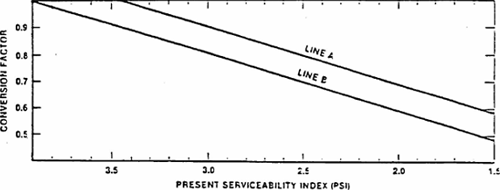
| Material Type | Equivalency Factor (E) |
|---|---|
| Asphalt Concrete | 1.00 |
| Type I Emulsified asphalt base | 0.95 |
| Type II Emulsified asphalt base | 0.83 |
| Type III Emulsified asphalt base | 0.57 |
|
Type I - Emulsified asphalt mixes plant-mixed with processed, dense-graded aggregates, and having properties similar to asphalt concrete. Type II - Emulsified asphalt mixes made with semi-processed crusher-run, pit-run, or bank-run aggregates. Type III - Emulsified asphalt mixes with sands or silty sands. | |
| Classification of Material | Description of Material | Conversion Factors* |
|---|---|---|
| I |
| 0.0 |
| II | Granular subbase or base - reasonably well-graded, hard aggregates with some plastic fines and CBR not less than 20. Use upper part of range if P.I. is 6 or less; lower part of range if P.I. is more than 6. | 0.1-0.2 |
| III | Cement or lime-fly ash stabilized subbases and bases** constructed from low plasticity soils - P.I. of 10 or less. | 0.2-0.3 |
| IV |
| 0.3-0.5 |
| V |
| 0.5-0.7 |
| VI |
| 0.7-0.9 |
| VII |
| 0.9-1.0 |
Notes:
- * Values and ranges of Conversion Factors are multiplying factors for conversion of thickness of existing structural layers to equivalent thickness of asphalt concrete.
- ** Originally meeting minimum strengths and compaction requirements specified by most state highway departments.
Figure 18-3. Design chart for full-depth asphalt concrete.(5)
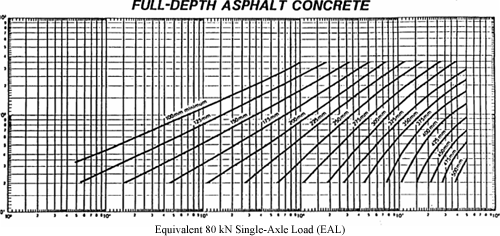
Figure 18-4. Flow chart for Asphalt Institute design method.
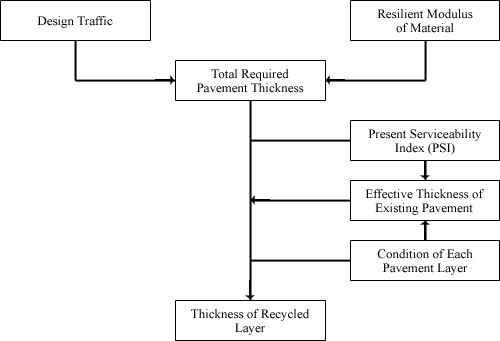
Figure 18-5. Design examples for hot recycled mix.
|
Example (Method 1): Determine the effective thickness of a two-layer full-depth asphalt pavement, PSI = 2.3. Even though cracked, the cracks are not open and the pavement appears to be stable. It consists of a 50-mm (2-in) asphalt surface course and a 150-mm (6-in) Type 11 emulsified asphalt base course. A conversion factor C = 0.70 is selected from figure 18-2. An equivalency factor E = 0.83 for the Type 11 emulsified asphalt base is determined from table 18-3.
Example (Method 2): Determine the effective thickness of a three-layer pavement consisting of a 100-mm (4-in) asphalt concrete surface, a 150-mm (6-in) cement stabilized base and a 100-mm (4-in) untreated crushed gravel base. The surface shows numerous transverse cracks and considerable alligator cracking in the wheel paths. The cement-stabilized base shows signs of pumping and loss of stability along the pavement edges. The conversion factors, C = 0.5 for the surface, C = 0.3 for the cement-stabilized base and C = 0.2 for the crushed gravel base, are determined from table 18-4.
Figure 18-3 is used to determine the thickness of a full-depth asphalt concrete pavement of new construction from which is subtracted the effective thickness of the existing pavement to establish the thickness of the recycled layer. Example: Given - subgrade MR = 82,800 kPa (12,000 psi) ESALd = 2 x 106 from figure 18-3,
| ||||||||||||||||||||||||||||||||||||||||||||||||
If the recycled layer is treated as an overlay (above part of the original pavement) the equation for the structural number of the overlay is as follows:
SNOL = SNY - ( FRL X SNxeff )
where:
| SNOL | = | structural number of the required overlay |
| SNY | = | structural number required for a "new" pavement to carry the estimated future traffic for the prevailing roadbed soil support conditions |
| FRL | = | remaining life factor |
| SNxeff | = | effective structural number of the existing pavement at the time the overlay is placed |
The resulting overlay thickness would include the thickness of the cold recycled layer plus the thickness of the asphalt concrete surface layer, if used. Table 18-5 shows the typical AASHTO structural layer coefficients obtained from a variety of recycled test sections using several types of recycled material (a refers to layer coefficient). These values were derived from the results of AASHTO Road Test and layered elastic programs. Layer coefficients for cold-recycled mixes can be derived from these values. Coefficients of foamed-asphalt recycled layers were found to range from 0.20 to 0.42 with a midpoint value of 0.31 according to a study reported in 1984.(6) The range for emulsion recycled layer ranged from 0.17 to 0.41 with a midpoint value of 0.29. A value between 0.30 and 0.35 can be considered appropriate for cold recycled mixes, as compared to a value of 0.44 for hot mix asphalt concrete.(3) However, the structural coefficient of cold recycled mixes is dependent on several other factors such as cure rate, and must be evaluated on the basis of sound engineering judgement.
| Type of Recycled Material Used | Layer Used As | Range of ai Computed | Average ai | Number of Test Sections | ai for Corresponding Layer and Material at AASHTO Road Test |
|---|---|---|---|---|---|
| Central plant Recycled asphalt Concrete surface | Surface | 0.37-0.59 | 0.48 | 14 | 0.44 |
| Central plant Recycled asphalt Concrete surface | Base | 0.37-0.49 | 0.42 | 3 | 0.35 |
| In-place recycled asphalt concrete stabilized with asphalt and/or an asphalt modifier | Base | 0.23-0.42 | 0.31 | 4 | 0.15-0.23 |
| In-place recycled asphalt concrete and existing base material stabilized with cement | Base | 0.40 | 0.40 | 1 | 0.15-0.30 |
| In-place recycled asphalt road mix stabilized with asphalt | Surface | 0.42 | 0.42 | 1 |
Note:
- ai - Layer Coefficient.
Asphalt Institute Method
The thickness design method presented in The Asphalt Institute Manual for Cold-Mix Recycling(7) is based on the use of emulsified asphalt mixes but is considered applicable for cold-recycled mixtures made with other types of asphalt binders such as asphalt cement. The required input parameters include estimated design traffic level and subgrade strength. Design charts, shown in figures 18-6 and 18-7(1) can be used to determine the thickness of the recycled layers.
Figure 18.6. Design charts (metric units) for recycled cold mixed Type A.(7)
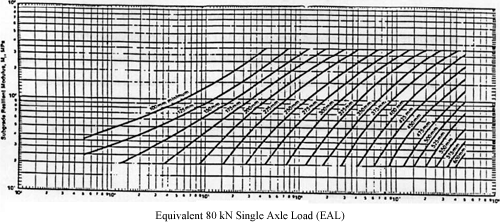
Figure 18.7. Design charts (metric units) for recycled cold mixed Type B.(7)
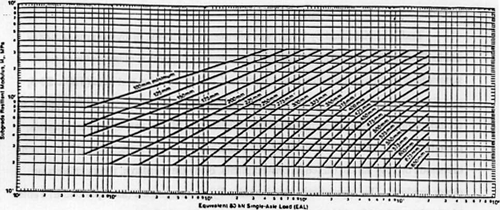
Traffic is classified by ESAL, type of street or highway, or by volume of heavy trucks (table 18-2, mentioned before). The subgrade support is classified by type of subgrade or obtained from Resilient Modulus, CBR, or R-value test data (table 18-3, mentioned before). The mix can be classified into two types - Type A and B. Type A is the mix which consists of semi processed, crusher run, pit ran or bank run aggregates, mixed in central plants or by travel plants (figure 18-6). Type B includes mixes which use sands or silty sands, mixed in central plants, or by travel plants, rotary mixers or motor graders. This type of mix also includes Type A aggregate (as explained in table 18-6) when mixed by rotary mixer or motor grader (figure 18-7). The output from the design chart gives the combined thickness of a recycled cold-mix base and an asphalt surface course. Table 18-7(7) shows the recommended thicknesses of asphalt surfaces over cold-mix recycled bases. A surface course of asphalt concrete or emulsified asphalt mix Type I (plant mixed, laboratory designed, emulsified asphalt mixes made with dense graded aggregate and having properties similar to asphalt concrete) may be substituted for a portion of the thickness of emulsified asphalt Type A or B mix obtained from the design chart. When Type I emulsified asphalt mix is used, a single or double surface treatment should be used as a wearing course, but this should not be substituted for any of the thickness obtained from a design chart. For light traffic conditions, ESAL less than 104, a surface treatment may be placed directly on, but should not be substituted for. any portion of the thickness of Type A or B emulsified asphalt mix obtained from a design chart. Two design examples are shown in figure 18-8(1)
| Sieve Size | Percent Passing by Weight | ||||||
|---|---|---|---|---|---|---|---|
| Open-Graded | Dense-Graded | ||||||
| A | B | C | D | E | F | G | |
| 38.1 mm (1½ in.) | 100 | 100 | |||||
| 25.0 mm (1 in.) | 95-100 | 100 | 80-100 | ||||
| 19.0 mm (¾ in.) | 90-100 | ||||||
| 12.5 mm (½ in.) | 25-60 | 100 | 100 | 100 | 100 | ||
| 9.5 mm (3/8 in.) | 20-55 | 85-100 | |||||
| 4.75 mm (No. 4) | 0-10 | 0-10 | 25-85 | 75-100 | 75-100 | 75-100 | |
| 2.36 mm (No. 8) | 0-5 | 0-5 | |||||
| 1.18 mm (No. 16) | 0-5 | ||||||
| 300 µm (No. 50) | 15-30 | ||||||
| 150 µm (No. 100) | 15-65 | ||||||
| 75 µm (No. 200) | 0-2 | 0-2 | 0-2 | 3-15 | 0-12 | 5-12 | 12-20 |
| Traffic Level (ESAL)a | Minimum Surface Course Thickness | |
|---|---|---|
| mm | (in) | |
| <104 | xb | xb |
| 104 | 50c | (2)c |
| 105 | 50c | (2)c |
| 106 | 75c | (3)c |
| 107 | 100c | (4)c |
| >107 | 130c | (5)c |
Notes:
- Equivalent 80 kN (18,000 lb) single-axle load applications.
- Single or double surface treatment.
- Asphalt concrete or Type 1 emulsified asphalt mix with a surface treatment.
Example 1:Assume the following conditions:
The difference between the combined thickness and the minimum surface course is the thickness of the cold-mix recycled base: 190 mm ( 7.5 in ) - 50 mm ( 2 in ) = 140 mm ( 5.5 in ) If a portion of an old granular base is to remain below a recycled base the properties of the granular base materials should be evaluated, and appropriate layer equivalencies assigned for use in the thickness design. Conversion factors are listed in the following table. The remaining aggregate base and/or subgrade should be recompacted and primed if left as an aggregate base. Also, any drainage deficiencies in the old pavement structure should be corrected before reconstruction proceeds.(7)
These conversion factors apply only to pavement evaluation for cold-mix recycling. In no case are they applicable to original thickness design. *Values and ranges of conversion factors are multiplying factors for conversion of thickness of existing structural layers to equivalent thickness of cold-mix recycled base. Example 2:A cold-mix recycling design requires 150 mm ( 6 in) of recycled base. 100 mm (4 in) of well graded, hard aggregates with a plasticity index (P. I.) Of 5 are left to remain below the recycled base. A conversion factor of 0.2 is obtained for the aggregate layer. The effective thickness of the remaining granular base is 100 mm (4 in) X 0.2 = 20 mm ( 0.8 in). Therefore, the recycled base thickness is reduced from 150 mm (6 in) to 130 mm ( 5 in). |
Structural Design For Asphalt Surface Recycling
The load carrying capacity of an existing pavement cannot be improved by asphalt surface recycling, since this method is used for only 50 mm (2 in) or less depth of the pavement. The improvement can be effected only by improving the existing HMA mix. Surface distress can be removed but structural or subgrade problems which cause the distresses cannot be eliminated by this method.(3) The thickness of the overlay will depend on the purpose of recycling. If the objective is to rejuvenate the upper layer of the existing material and improve the ride quality of a structurally adequate pavement, then a minimum thickness should be considered on the basis of the maximum size of the aggregate used for the overlay mix. In general, the thickness of the overlay should not be less than 1½ times the maximum particle size in the new mix.(3) On the other hand, if the primary purpose is to increase the load carrying capacity of the mix, then the overlay should be designed according to conventional methods to yield the required strength. Depending on the specific need of the overlay, the thickness can range from 25 mm to 100 mm (1 to 4 in).(8)
The thickness of the overlay will also depend on the construction method, since extra structural capacity can be added
- through an overlay after heating, scarifying, rejuvenating, and compacting the recycled mixture,
- by blending virgin mix with scarified old mix prior to compaction (re-mixer process), or
- by overlaying the loose, scarified, and rejuvenated old mix with loose, virgin mix and compacting both at the same time (re-paving process).
Either of the three methods can produce an acceptable surface. When the two mixes are not mixed together, some extra structural advantage can be obtained, but only the new mix is considered to comprise the overlay. An allowance can be made for the rejuvenating effect of the recycling process in determining the effective thickness or remaining life of the existing pavement. The material that has been recycled with a modifier will provide a soft layer that can act as a stress-relieving layer. This layer acts as a barrier in crack propagation through the new surface, especially when thin overlays are used. It is possible that a 25-mm (1-in) overlay over 25 mm (1 in) of recycled material can provide better performance than 65 mm (2½ in) of new overlay over the original surface.(9) If the recycled material is mixed with new aggregate or asphalt concrete mix, then the resulting additional thickness is considered as an overlay. Both mix design and structural design would be the same as for hot mix recycling.
Summary
The method of structural design, which provides the required strength to a pavement structure, has evolved from an empirical to a semi-mechanistic procedure. Since hot recycled asphalt material can provide similar or even superior performance compared to conventional hot mix asphalt, the AASHTO design guide indicates that there is essentially no difference between the recycled and virgin materials, and recommends the structural rehabilitation analysis method for conventional mix for design of recycled pavements as well.
The AASHTO method for design of hot mix recycled asphalt is based on the derivation of the structural number required for the pavement with the help of design traffic, reliability level of prediction of traffic and performance, performance period, and the pavement condition rating. The structural number can be expressed as the sum of the product of the depth, layer coefficient, and drainage coefficient of each of the layers. The structural number for the recycled layer, which can be treated as an overlay, can be calculated as the difference between the structural number required by the finished pavement and the structural number of the existing pavement. Values of layer coefficients are also presented in the AASHTO design guide. The Asphalt Institute method uses the traffic level, the subgrade resilient modulus, and the type of surface and base to calculate the design thickness. In this method also, the hot recycled material can be considered to be similar in performance to conventional hot mix. In another Asphalt Institute procedure, the recycled layer can be considered as an overlay and its thickness can be calculated as the difference between the total thickness required by the pavement and the thickness of the existing pavement. The total thickness required can be determined on the basis of condition rating of the pavement and a method of converting and expressing each type of material or pavement layer as equivalent thickness of asphalt concrete layer. Other methods include design procedures based on load-deformation response calculation by computer methods with the help of loading and material properties of the pavement layers. In such methods the pavement is assumed to behave as an elastic or viscoelastic laver on an elastic or viscoelastic layer.
The AASHTO design method for cold recycled mixes is similar to the design method for the hot-mix asphalt. However, layer coefficients for cold-recycled mixes are dependent on construction methods, and should be determined on the basis of engineering judgement. The Asphalt Institute method assumes the pavement as a multilayered elastic structure, and determines the required thickness on the basis of design traffic and subgrade strength. The combined thickness of cold-recycled base and surface course is obtained from charts. The thickness of cold-recycled bases can be obtained by taking into consideration the recommended thickness of hot mix asphalt overlay on the cold-recycled base.
Since asphalt surface recycling does not normally improve the structural capacity of an existing pavement, there is no method for thickness design of surface recycling. However, the thickness of any overlay should be based on conventional overlay design method. If the overlay is meant to improve the ride qualities only, then the minimum thickness should be based on the maximum aggregate size used in the mix.
References
- American Association of State Highway and Transportation Officials (AASHTO). AASHTO Guide for Design of Pavement Structures, Washington, DC, 1986.
- Asphalt Institute. Asphalt Hot-Mix Recycling, Manual Series No. 20 (MS-20), College Park, MD, 1986
- Pavement Recycling Guidelines for Local Governments - Reference Manual, Report No. FHWA-TS-87-230, FHA, U.S. Department of Transportation, Washington, DC, 1987.
- Asphalt Institute. Thickness Design: Asphalt Pavements For Highways and Streets, Manual Series No. I (MS-1), College Park, MD, September, 1981.
- Asphalt Institute. Asphalt Overlays for Highways and Street Rehabilitation, Manual Series No. 17 (MS-17), College Park, MD, June, 1983.
- A.J. Van Wijk. Structural Comparison of Two Cold Recycled Pavement Layers, Transportation Research Record 954, TRB, National Research Council, Washington, DC, 1984.
- Asphalt Institute. Asphalt Cold-Mix Recycling, Manual Series No. 21 (MS-2 1), College Park, MD, 1986.
- G.F. Whitney. Urban Surface Recycling, Transportation Research Record 780, TRB, National Research Council, Washington, DC, 1980.
- FHWA. Techniques for Pavement Rehabilitation, Participants Manual for Training Course, National Highway Institute, Washington, DC, 1982.
| << Previous | Contents | Next >> |

